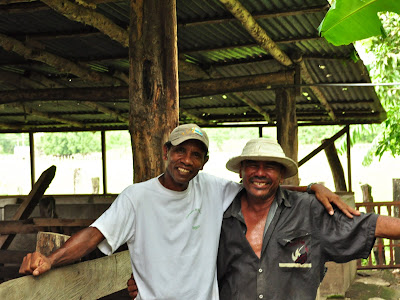
Here is the food that the village lady offered me. I think it is a tamale, which is usually made from corn meal stuffed with chicken or pork and boiled in banana or plantain leaves.
I have two confessions that will rightfully disappoint you, especially some of my readers who left comments saying that they looked forward to the post of the local food in anticipation that it would be delicious.
I declined her offer of the food. (She did not make the food for me, as she was making it before we even arrived.)
My confessions are that I am not very adventuresome when it comes to food and I have a very limited vocabulary of Spanish, so I did not know exactly what was in this dish and I do not experiment with food unless my wife, Julie, is with me and she can tell me if I will like something or not. Julie was not with me on this trip.
My excuse for the limited range of my palate is that my late parents prepared me for the world in many ways, but not food. We never had Mexican food, or even pizza, and I did not realize until I went to college that spaghetti came in anything other than a can.
I never took Spanish in school. I took Russian. I go down to our condos in Costa Rica as often as I can, but I still work full time in Arizona so I stay in Costa Rica in short intervals, not enough time to learn Spanish. And in Tamarindo I do not need to know Spanish because everybody speaks English, as it is a tourist town full of foreigners. I am determined to learn Spanish in the near future.
We are showing photos of the village of Cernobbi on the shores of Lake Como, Italy, this week on our
Viva la Voyage travel photo site.
 There is a metate in use in this ranch kitchen. Metates, of course, are the traditional method of grinding grain into flour, dating to pre-Columbian time. Costa Rican metates can differ from Mexican metates because often they do not have a rim on the edges.
There is a metate in use in this ranch kitchen. Metates, of course, are the traditional method of grinding grain into flour, dating to pre-Columbian time. Costa Rican metates can differ from Mexican metates because often they do not have a rim on the edges. 





























